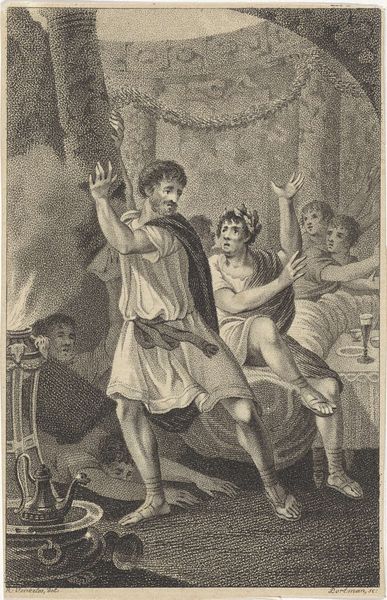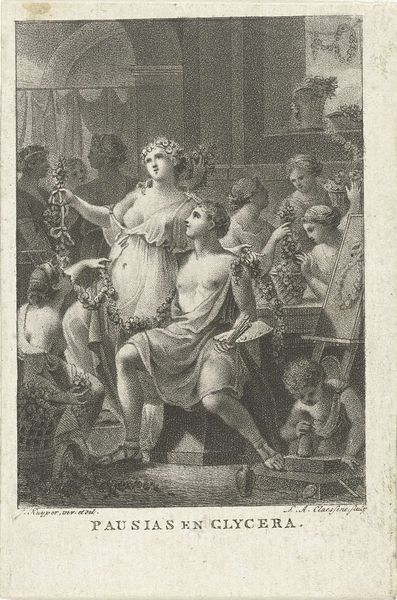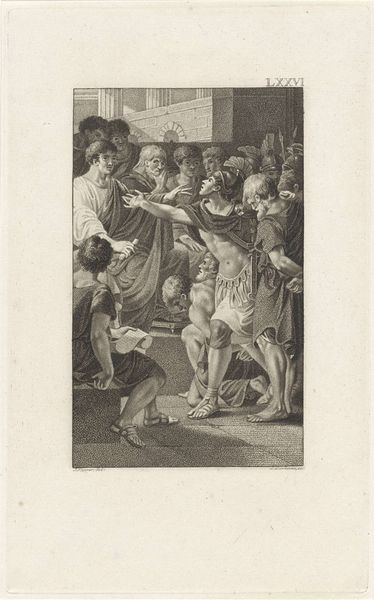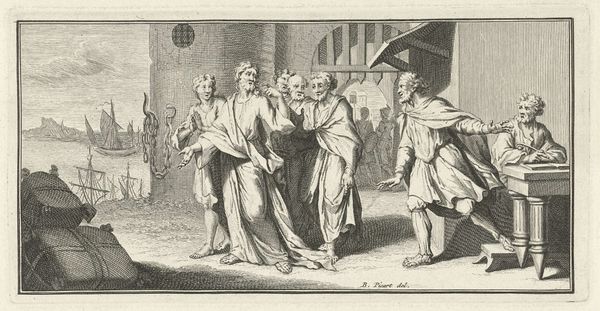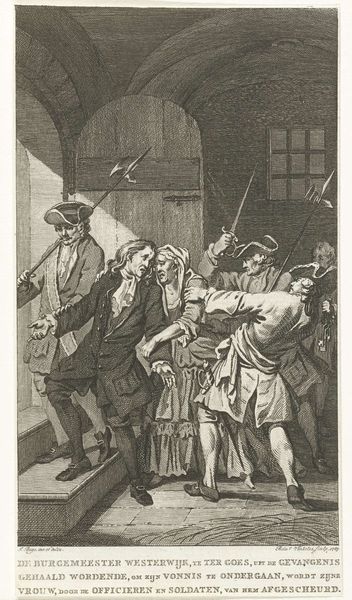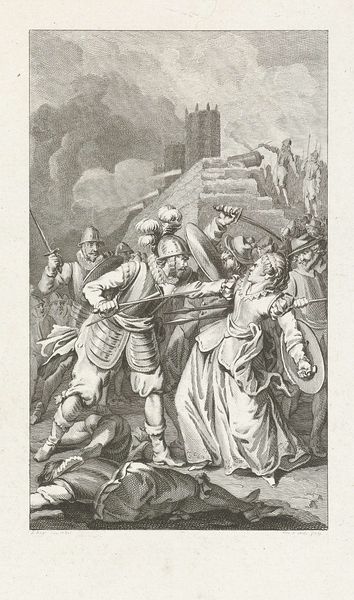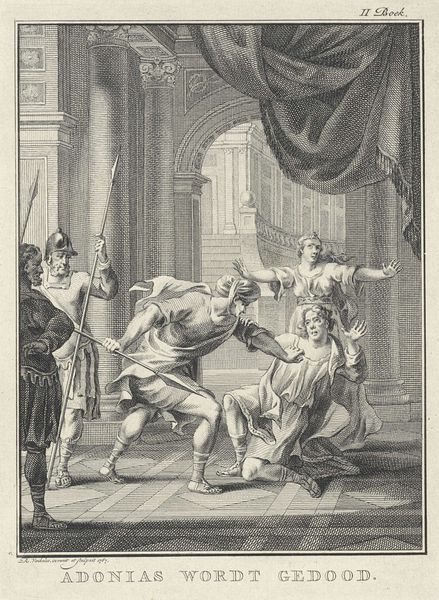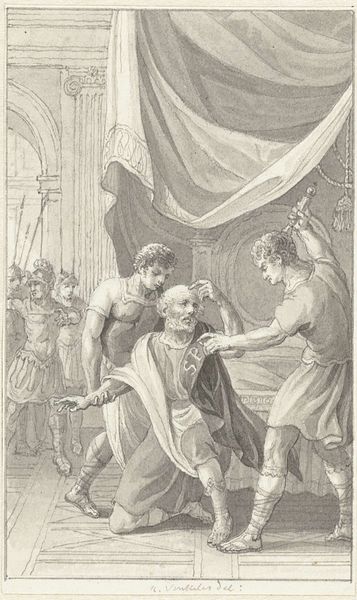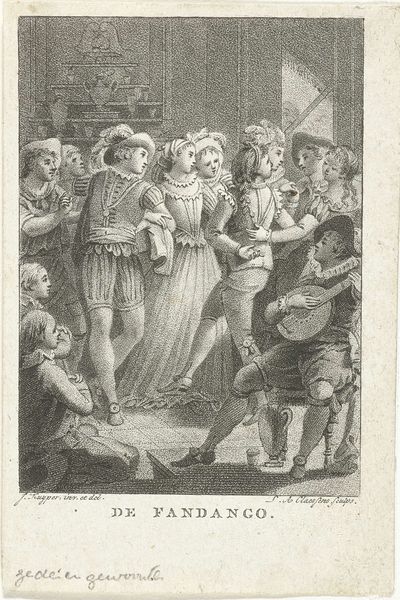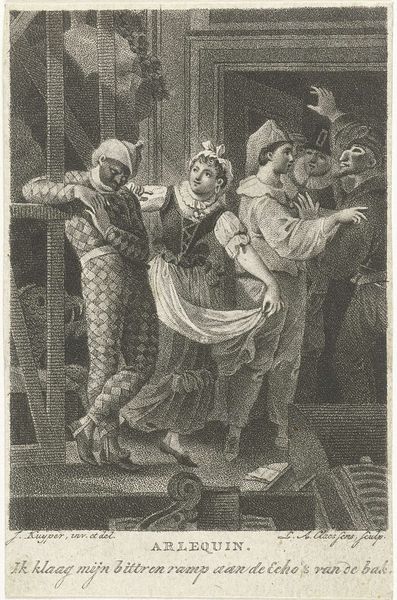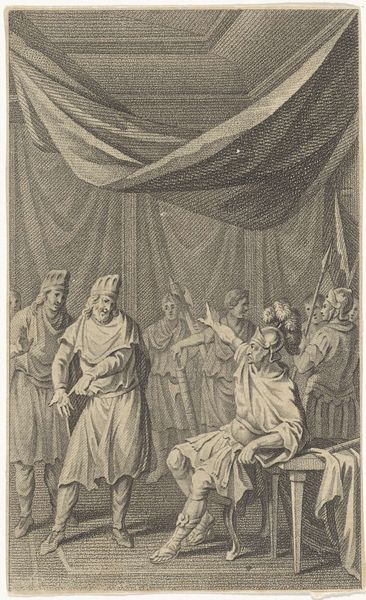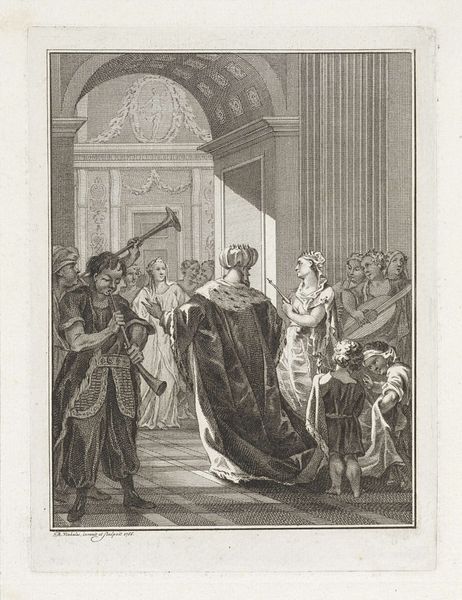
engraving
#
neoclacissism
#
old engraving style
#
figuration
#
line
#
history-painting
#
academic-art
#
engraving
Dimensions: height 102 mm, width 70 mm
Copyright: Rijks Museum: Open Domain
Editor: This is "The People Pressing to the Festival in Honor of Cato," an engraving by Lambertus Antonius Claessens from 1801. I find the composition really interesting – all these figures crammed together, pushing forward. It makes me wonder, what exactly are they so eager to see? Curator: That’s a great observation. To understand this piece, we need to consider its historical context. The late 18th and early 19th centuries were a time of revolution and upheaval. Neoclassical art, like this engraving, often looked back to Roman virtue and civic duty for inspiration and, more importantly, for models of political engagement and public virtue. Cato, a Roman senator known for his integrity and opposition to tyranny, became a potent symbol. Editor: So, the festival itself is a political statement? Curator: Precisely! Consider how academic art reinforces traditional power structures, often idealizing the past to legitimize the present. The 'pressing' crowd indicates both urgency and popular support. The engraving subtly hints at contemporary political anxieties. Note how Claessens chose engraving. Why do you think an engraving and not a painting? Editor: Well, maybe it allowed for wider distribution of the image and thus the political idea behind it. Like political posters. Curator: Exactly. Artworks can also be artifacts that illustrate public support of an idea, by means of purchase and distribution. These choices demonstrate its intent to be public. It's meant to be a piece that resonates beyond the gallery walls. Editor: I hadn't considered the public aspect of choosing engraving; that’s a very insightful observation about academic art and political discourse! Curator: Thinking about the purpose broadens how we understand art. Thanks for sharing thoughts!
Comments
No comments
Be the first to comment and join the conversation on the ultimate creative platform.
